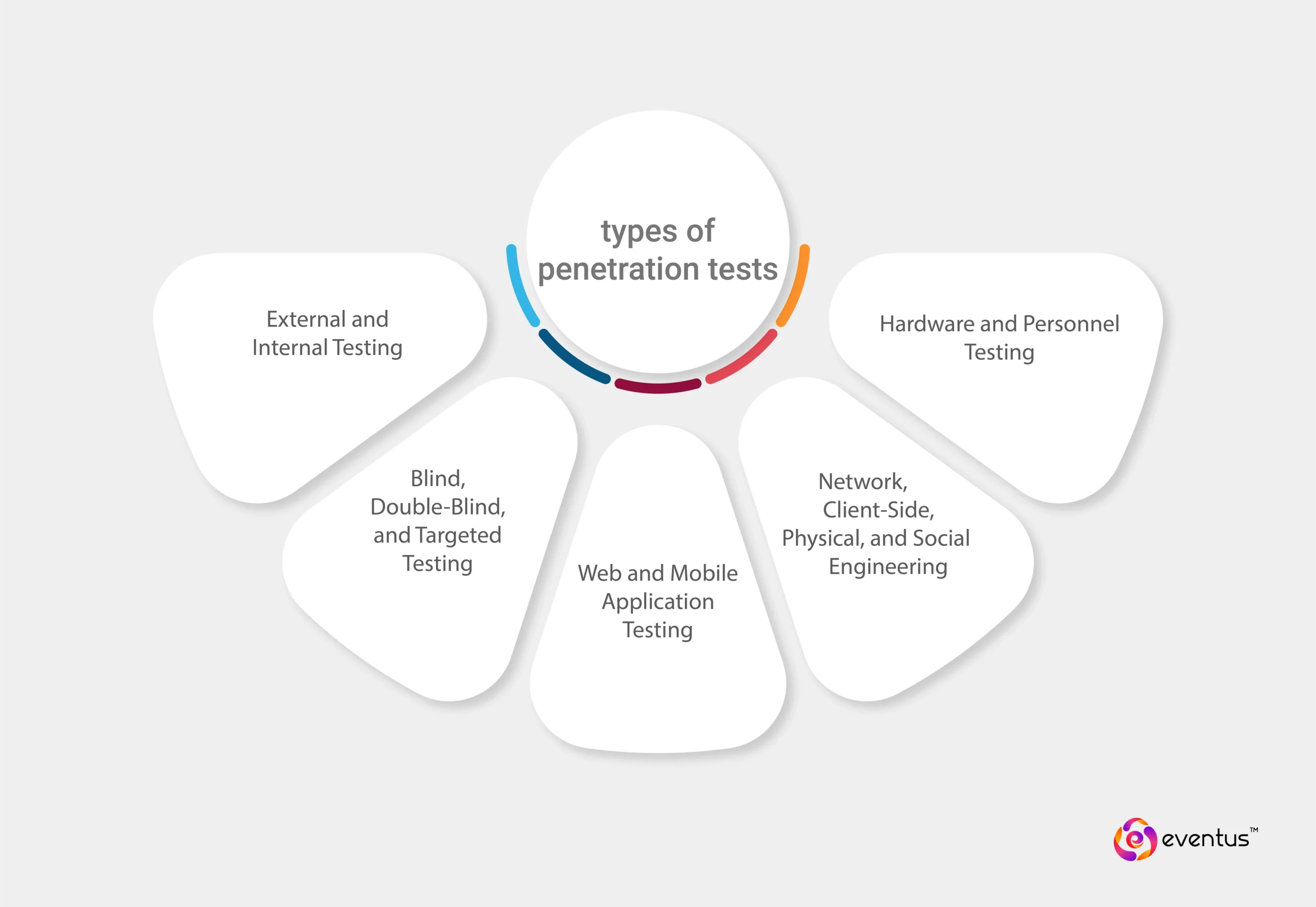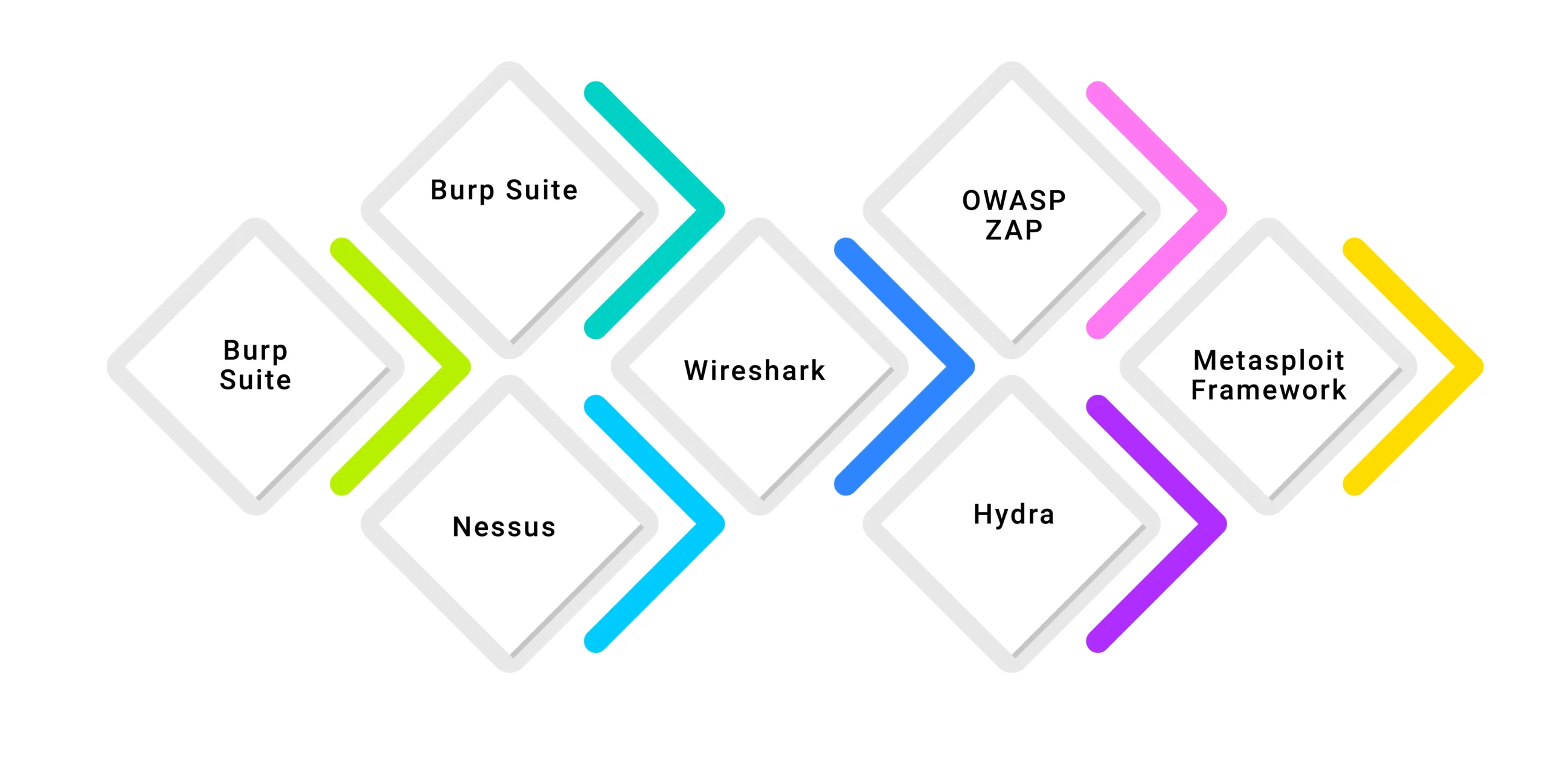Penetration testing is a cornerstone of modern cybersecurity strategies, simulating real-world attacks to uncover and address security vulnerabilities. This article explores the fundamentals of penetration testing, including its key advantages, diverse types—ranging from web and mobile application testing to physical and social engineering tests—and the structured stages followed in the process. It also highlights essential tools, PTaaS (Penetration Testing as a Service), top enterprise-grade software, and current job trends in India. Whether you're a cybersecurity professional or a business leader, this guide provides valuable insights to strengthen your security posture and align with industry standards.
Table of Contents
What is penetration testing?
Penetration testing in cybersecurity means a controlled simulation of a cyberattack conducted by ethical hackers to identify and exploit vulnerabilities within an organization's systems, networks, or applications. Its objective is to assess the effectiveness of existing security controls and reveal potential entry points that malicious actors could exploit. The findings from a penetration test are used to strengthen the organization's security posture through targeted remediation and improved defense strategies.
What are the key benefits of penetration testing?
The key benefits of penetration testing are as follows:
- Identifies Security Weaknesses
It uncovers exploitable vulnerabilities in systems, applications, networks, and security controls before attackers do. - Validates Security Controls
Confirms whether existing defenses (e.g., firewalls, IDS/IPS, access controls) are effectively configured and capable of preventing or detecting attacks. This is especially critical for a SOC, which relies on accurate alerts and well-tuned systems to respond effectively to threats. - Supports Risk Management
Helps organizations prioritize remediation based on actual risk exposure, enabling informed decision-making regarding investments and controls. - Ensures Regulatory Compliance
Satisfies requirements for standards like PCI-DSS, HIPAA, ISO 27001, and GDPR, which often mandate regular security assessments. - Tests Incident Response Readiness
Evaluates how well the security team detects, responds to, and recovers from simulated attacks, identifying procedural gaps. For organizations working with a managed SOC provider, this also ensures alignment between internal teams and external response units to handle real-time threats effectively. - Protects Business Reputation
Reduces the risk of data breaches that can damage brand trust, disrupt operations, and lead to legal or financial consequences. - Enhances Security Awareness
Educates stakeholders—including developers, IT staff, and management—on real-world attack scenarios and common vulnerabilities. Organizations leveraging SOC as a Service gain additional visibility into these scenarios through continuous monitoring and alerting, improving team responsiveness and preparedness. - Prevents Financial Loss
Proactively addressing security gaps lowers the likelihood of costly cyber incidents, including data theft, ransomware, and fraud.
What are the different types of penetration tests?
Penetration tests can be classified based on target scope, knowledge level of the tester, and the system or asset being tested. Common types include:
- External and Internal Testing
- Blind, Double-Blind, and Targeted Testing
- Web and Mobile Application Testing
- Network, Client-Side, Physical, and Social Engineering
- Hardware and Personnel Testing
Each type of penetration test helps identify specific vulnerabilities and enhance data security through informed mitigation.
1. External penetration testing
External penetration testing targets internet-facing assets such as web applications, servers, and DNS to identify vulnerabilities that an attacker could exploit remotely. This type of pen test evaluates firewall rules, cloud configurations, and other perimeter defenses.
2.Internal penetration testing
Internal testing simulates an insider threat, assessing how much damage an attacker with internal access—whether a malicious employee or compromised user—could cause. It helps test the effectiveness of internal segmentation and access controls within the security infrastructure.
3.Blind penetration testing
In blind penetration testing, the ethical hacker receives minimal information about the target environment. The goal is to simulate a real-world attack scenario where the attacker must rely solely on reconnaissance to identify entry points and exploit security flaws.
4.Double-blind penetration testing
Double-blind testing extends the blind approach by ensuring the internal security team is also unaware of the testing schedule. This tests the team’s incident detection and response capabilities under real-time pressure, uncovering both security and procedural weaknesses.
5.Targeted penetration testing
Targeted testing is conducted with full transparency between the penetration tester and the security team. It facilitates collaboration, providing insight into vulnerabilities and how security controls respond to simulated threats in real time.
6.Web application penetration testing
Web application penetration testing focuses on evaluating the security of web applications by simulating attacks such as SQL injection, XSS, and authentication bypass. It helps protect sensitive data and comply with standards like the Open Web Application Security Project (OWASP).
7.Mobile application penetration testing
This testing assesses mobile apps on platforms like Android and iOS for vulnerabilities in storage, API communication, and authorization mechanisms. It ensures the overall security posture of mobile software used in enterprise environments.
8.Client-side penetration testing
Client-side testing evaluates vulnerabilities in applications that run on the end user’s system—such as browsers, email clients, and document processors. These tests simulate attacks like file-based exploits and malicious scripts to assess how client-side weaknesses can be exploited.
9.Network penetration testing
Network testing examines internal and external networks to identify security weaknesses such as open ports, misconfigured firewalls, outdated protocols, or unpatched systems. Pen testers use scanning tools and techniques to mimic real-world cyber threats.
10.Physical penetration testing
Physical testing attempts to gain unauthorized access to buildings, server rooms, or secured areas. Testers may try tailgating, lock-picking, or bypassing RFID systems, evaluating the effectiveness of physical security measures and access controls.
11.Social engineering penetration testing
This test simulates manipulation tactics like phishing, pretexting, and baiting to trick users into revealing confidential information or credentials. It evaluates employee security awareness and the effectiveness of training and policies against human-targeted threats.
12.Hardware penetration testing
Hardware testing focuses on devices like routers, IoT gadgets, and embedded systems. It involves reverse engineering, firmware analysis, and side-channel attacks to uncover security issues in physical computing systems.
13.Personnel penetration testing
This involves evaluating the susceptibility of employees to social engineering, as well as assessing compliance with security protocols. It may include role-specific tests for high-risk personnel in HR, finance, or IT departments.
What are the stages of a penetration test?
The standard stages of a penetration test follow a five-phase methodology:
- Planning and Reconnaissance – Define the scope, rules of engagement, and gather information through open-source intelligence (OSINT).
- Scanning and Enumeration – Use scanning tools to map the attack surface and identify active services, ports, and systems.
- Exploitation – Attempt to gain access using vulnerabilities found in software, configurations, or weak security protocols.
- Post-Exploitation and Privilege Escalation – Determine the value of the compromised system and assess how far an attacker could pivot.
- Reporting and Remediation – Document findings, impact, and recommendations to improve the security posture.
What happens after a penetration test?
Post-test activities focus on:
- Delivering a detailed security assessment report.
- Conducting a remediation workshop with the security team.
- Verifying fixes through re-testing or validation scans.
- Offering strategic guidance for future improvements to security infrastructure.
What Tools and Services Are Used in Penetration Testing?
Penetration testing tools are designed to identify, exploit, and report on security flaws across networks, web applications, and systems. The most commonly used include:
- Nmap – A network scanning tool used to discover hosts, services, and open ports on a computer system.
- Burp Suite – A comprehensive platform for web application security testing, including SQL injection and session management flaws.
- Metasploit Framework – Enables ethical hackers to simulate real-world attacks by exploiting known vulnerabilities.
- Nessus – A widely used vulnerability scanning tool for network-level security assessments.
- Wireshark – A protocol analyzer used to inspect and analyze packet data in real time.
- OWASP ZAP – Open Web Application Security Project’s tool for finding vulnerabilities in web apps.
- Hydra – A brute-force login cracker used for password attacks across multiple protocols.
What are the advantages of Penetration Testing as a Service (PTaaS)?
Penetration Testing as a Service (PTaaS) combines the benefits of traditional testing with continuous delivery, scalability, and easier integration into existing workflows. Key advantages include:
- On-demand testing capabilities with cloud access to pen testers and tools.
- Faster turnaround for reporting and remediation, supporting agile teams.
- Integration with CI/CD pipelines, enabling testing within development cycles.
- Transparent communication between the testing team and internal security professionals.
- Better visibility through dashboards and centralized vulnerability tracking.
Which penetration testing software is best for enterprises?
Enterprises with large, complex infrastructures typically require penetration testing software that integrates with their broader security infrastructure and supports both manual and automated methodologies. Recommended options include:
- Core Impact – Designed for enterprises, offering multi-vector testing across networks, web, and endpoints.
- Burp Suite Enterprise – Provides automation for large-scale web application testing, with customizable scan configurations.
- Cobalt Strike – Focused on advanced penetration testing and red team operations, simulating persistent threats.
- Acunetix – Automated web application testing tool that’s effective in identifying a wide range of security weaknesses.
- Qualys WAS – A cloud-based solution for continuous web application scanning, with integrated reporting and compliance support.
How many penetration testing jobs are available in India?
As of May 2025, the penetration testing job market in India shows substantial activity. Naukri.com lists over 3,200 open positions related to penetration testing. LinkedIn reports more than 2,000 active job listings for penetration testers, while Glassdoor indicates approximately 657 vacancies in the field. These figures suggest a strong demand for professionals skilled in identifying and mitigating security vulnerabilities across various industries. This growth is largely driven by the rapid expansion of cybersecurity companies in India, which are increasingly investing in advanced threat detection and security assessment capabilities to address the evolving cyber threat landscape.









